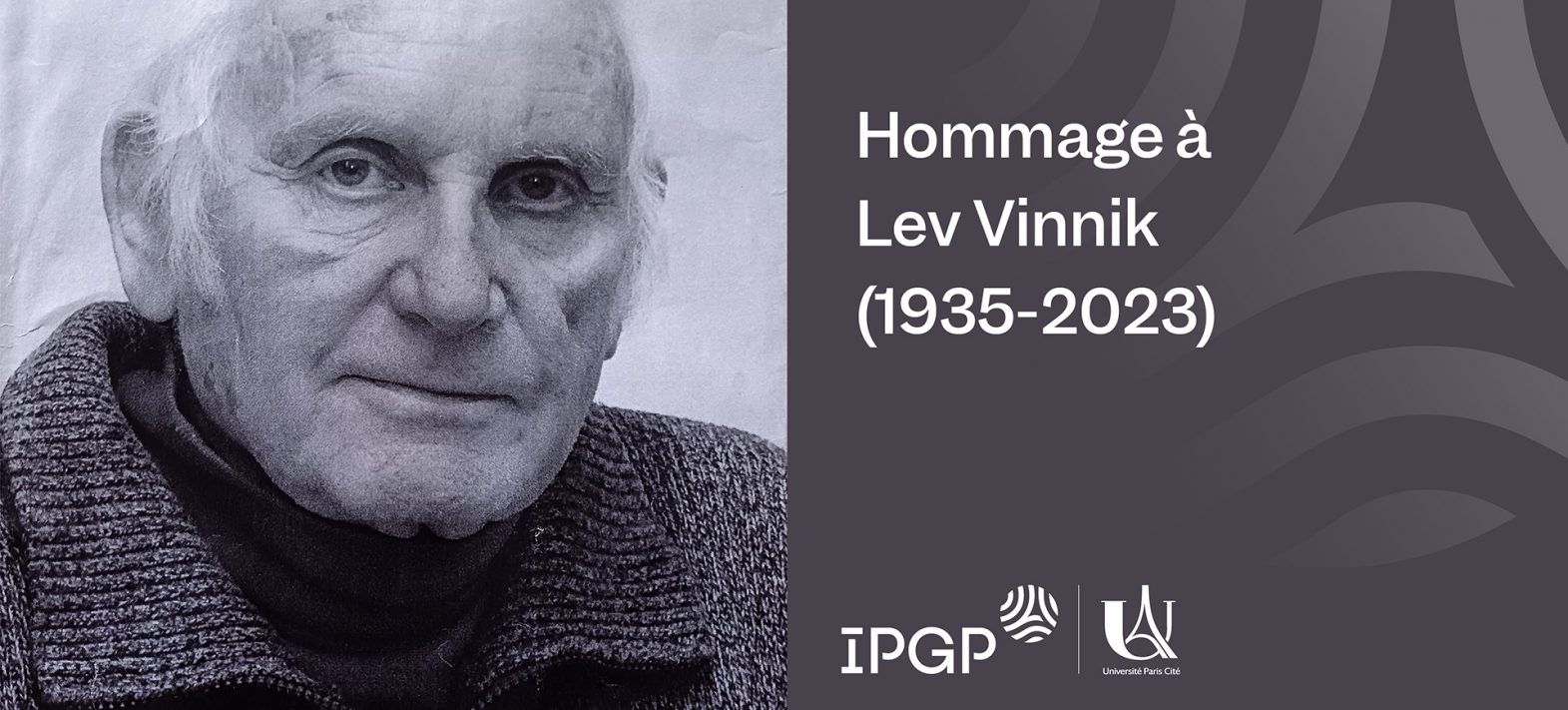Tribute to Lev Vinnik
Lev Pavlovich Vinnik, an outstanding geophysicist and world-famous seismologist , and one of the leading members of the Institute of Physics of the Earth of the Russian Academy of Sciences, passed away on September 27, 2023, at the age of 88. His colleagues at the IPGP, where he often visited, pay him tribute.

L.P. Vinnik was born on March 29, 1935 in Smolensk. In 1957 he graduated from the Faculty of Geology of Lomonosov Moscow State University, majoring in geology and geophysics. In 1957-1959, he wintered in Antarctica as part of the 3rd Continental Antarctic Expedition. Since 1959, he was employed at the Institute of Physics of the Earth (IPZ) in Moscow. After defending his PhD thesis in 1966 in which he studied the internal structure of the Earth, he first worked on the seismic detection of nuclear explosions. He was the head of the Seismological Research Laboratory and the Department of the Internal Structure of the Earth at IPZ for many years.
Vinnik’s research in geophysics focused on the investigation of the internal structure of the Earth based on seismic data. His pioneering methods for studying the deep structure of the Earth using converted waves and shear wave splitting are widely used throughout the world. A talented and critical observational seismologist, in the 1970’s, he first showed the detection of the 400 and 660 km discontinuities using converted P to S waves (i.e. also known as “receiver functions”), a methodology which he perfected over the years and applied broadly to the study of layering in the Earth’s interior in a wide range of depths, from the crust to the core. He thus discovered the presence of partial melt at depths of several hundred kilometers, where this phenomenon was previously unknown. He carried out detailed studies of the structure of the crust and upper mantle of the Earth to depths of 200 – 300 km for a number of continental regions (e.g., Tien Shan, Indian Shield, Himalayas, Tibet, Greenland, Fennoscandia, South Africa) and beneath oceanic islands. He proposed new ideas about the structure of the lithosphere of the Indian subcontinent, showing that the Archean mantle keel of the Indian shield was reworked by younger processes, while the part of the Indian shield on which the western Himalayas, Ladakh and western Tibet were built was preserved.
He provided insights on the deep structure beneath the Azores and Cape Verde hot spots, down to lower mantle depths. He proposed new ideas about the nature of the 520-kilometer seismic boundary, showing that this boundary may represent the base of a low-velocity layer in the upper mantle transition zone. Vinnik proposed a methodology to determine azimuthal anisotropy of the upper mantle using the splitting of SKS core-refracted waves and applied it to many areas of the world, distinguishing frozen anisotropy in the lithosphere from anisotropy produced in the asthenosphere by presentday mantle flow. For example, he determined that the transition from frozen to active anisotropy occurs around a depth of 160 km in the Kalahari craton, thus for the first time providing an explanation for the large changes in the properties of mantle xenoliths recovered from depths larger than 160 km. He first reported the splitting of shear waves diffracted along the core-mantle boundary and showed that this indicated the presence of seismic anisotropy at the base of the earth’s mantle. He discovered and quantified the contribution of P waves to micro-seismic noise. Last but not least, he was one of the first to document, using broadband observations of corephases, that anisotropy increases towards the center of the earth’s inner core.
Lev Vinnik is the author of more than 200 publications. He was elected a member of the European Academy (Academia Europae, 1993) and a fellow of the American Geophysical Union (AGU, 1994). He was awarded the Alexander von Humboldt Prize (Humboldt Foundation, Germany, 1991), the B.B. Golitsyn prize of the Russian Academy of Sciences (RAN, 1997), the Beno Gutenberg Medal of the European Geosciences Union (EGU, 2004), the Harry F. Reid Medal of the Seismological Society of America (SSA, 2016), and the Ernst von Rebeur-Paschwitz Medal of the German Geophysical Society, (DGG, 2017).
Since 1988, Lev Vinnik visited regularly IPGP and collaborated closely with several members of the seismology group.
An exceptionally talented observational seismologist has left us. He will be missed for his sharp mind, enthusiasm and biting sense of humor.







